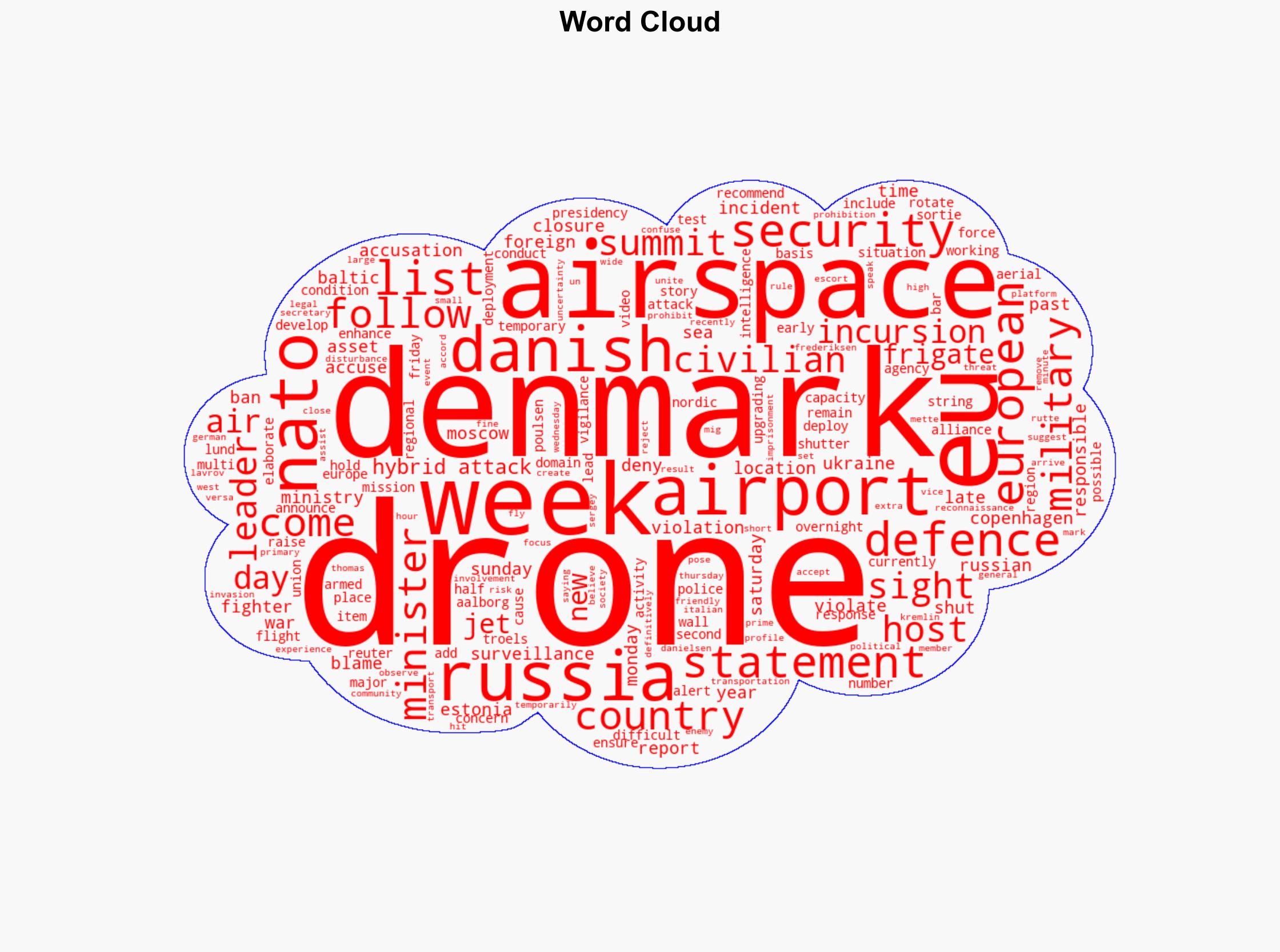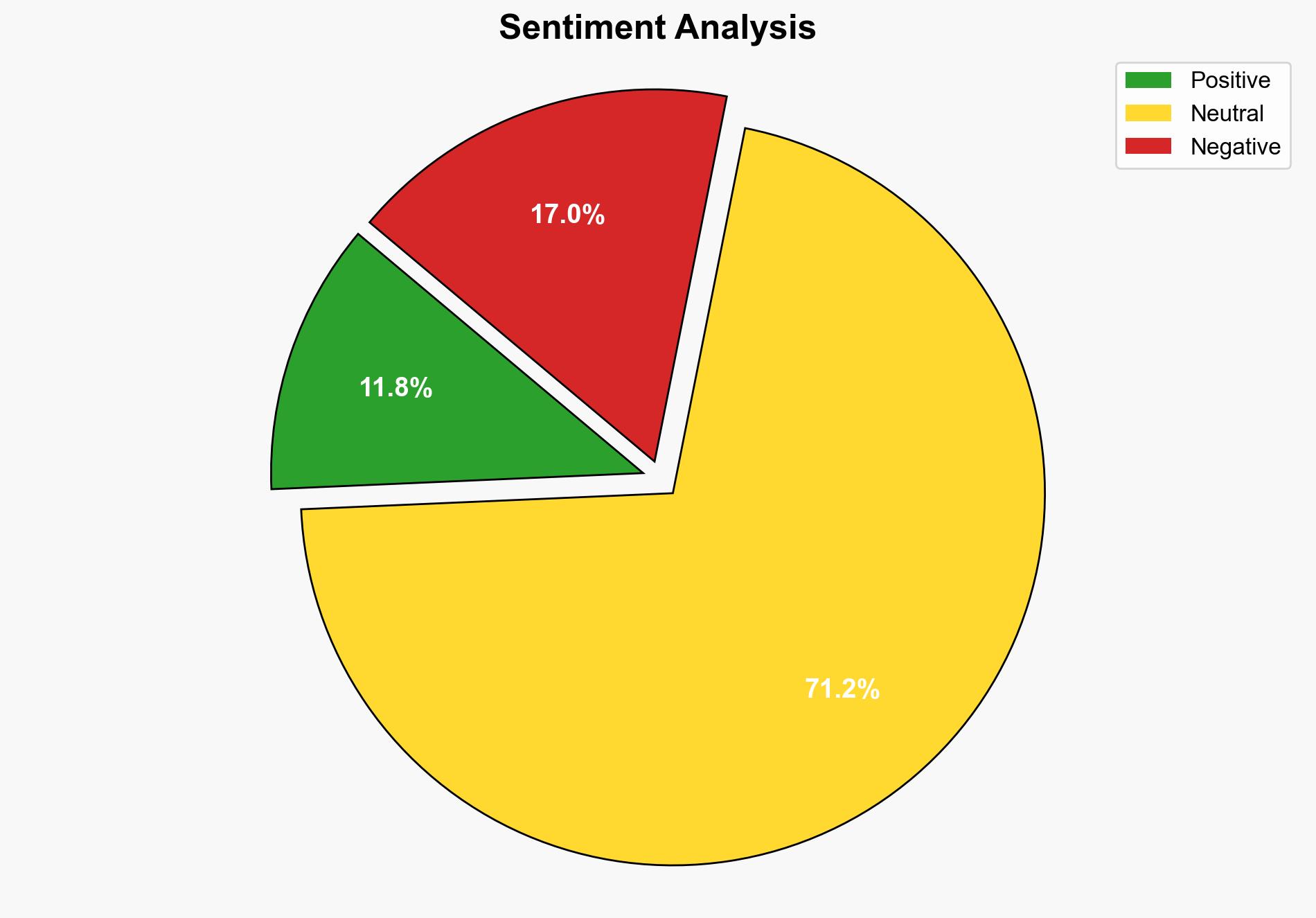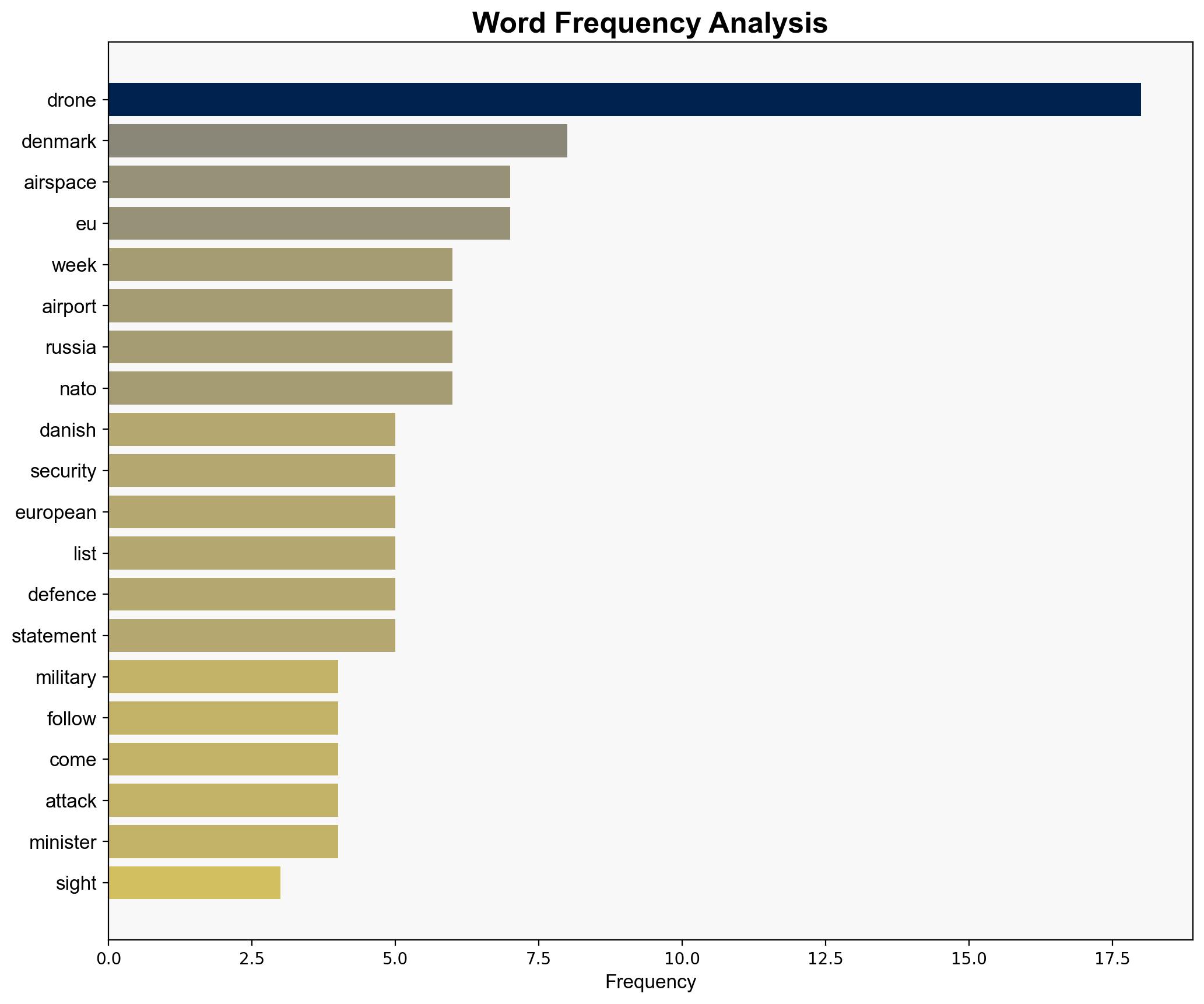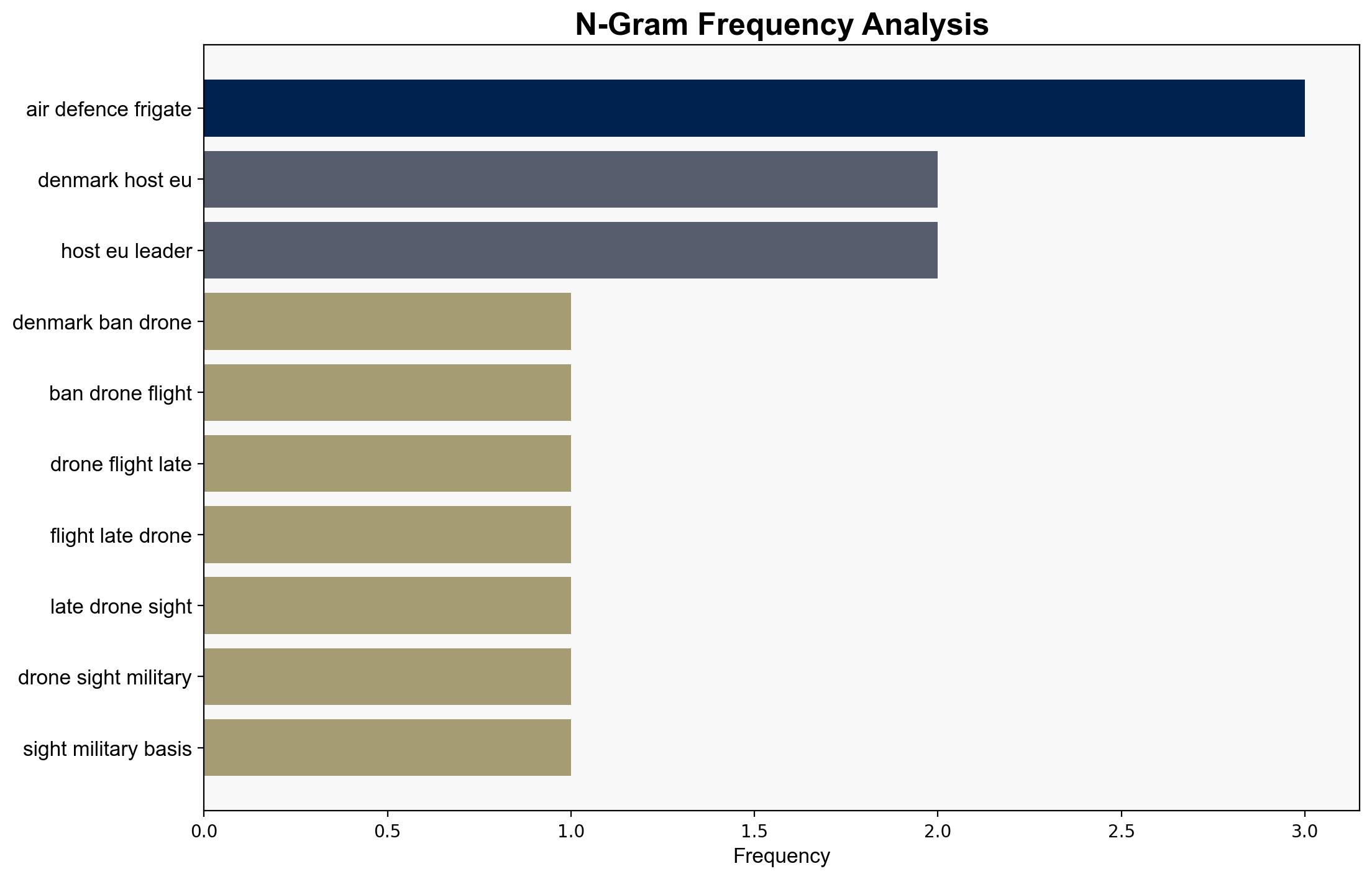Denmark bans drone flights after latest drone sightings at military bases – Al Jazeera English
Published on: 2025-09-28
Intelligence Report: Denmark bans drone flights after latest drone sightings at military bases – Al Jazeera English
1. BLUF (Bottom Line Up Front)
Denmark’s decision to ban drone flights following sightings at military bases is a precautionary measure amid heightened security concerns. The most supported hypothesis is that these incidents are part of a broader pattern of hybrid warfare tactics, potentially involving Russian interests. Confidence in this hypothesis is moderate, given the geopolitical context and recent regional activities. Recommended action includes enhancing surveillance and coordination with NATO allies to mitigate potential threats.
2. Competing Hypotheses
1. **Hypothesis 1**: The drone sightings are part of a coordinated hybrid warfare strategy by a foreign actor, likely Russia, to test and provoke NATO defenses in the region.
2. **Hypothesis 2**: The drone incidents are isolated events possibly linked to unauthorized civilian activities or non-state actors, with no direct connection to state-sponsored actions.
Using ACH 2.0, Hypothesis 1 is better supported by the pattern of recent drone activities, the geopolitical context of Russian-NATO tensions, and the timing of these incidents coinciding with high-profile EU and NATO events. Hypothesis 2 lacks substantial evidence and does not account for the strategic significance of the locations targeted.
3. Key Assumptions and Red Flags
– **Assumptions**: It is assumed that Russia has the capability and intent to engage in hybrid warfare tactics in the region. The assumption that all drone sightings are linked to a single actor may overlook the potential for multiple entities being involved.
– **Red Flags**: The lack of direct evidence linking Russia to these incidents is a significant gap. The possibility of domestic actors or other foreign entities being involved is not fully explored.
– **Blind Spots**: The potential for cyber elements or misinformation campaigns accompanying these physical drone incursions is not addressed.
4. Implications and Strategic Risks
The drone sightings could signal a testing of NATO’s response capabilities, potentially leading to increased military readiness and heightened tensions in the region. This situation could escalate into broader geopolitical conflicts if misinterpreted or if further provocations occur. Economically, disruptions to air travel and increased security measures could impact regional stability. Psychologically, these incidents may contribute to public fear and uncertainty, affecting societal resilience.
5. Recommendations and Outlook
- Enhance intelligence-sharing and joint surveillance operations with NATO allies to improve detection and response capabilities.
- Implement stricter regulations and technological solutions to prevent unauthorized drone activities.
- Scenario Projections:
- Best Case: Increased cooperation leads to effective deterrence and no further incidents.
- Worst Case: Misinterpretation of drone activities leads to military escalation.
- Most Likely: Continued low-level provocations requiring sustained vigilance and response.
6. Key Individuals and Entities
– Mette Frederiksen
– Troels Lund Poulsen
– Sergey Lavrov
– Vladimir Putin
7. Thematic Tags
national security threats, cybersecurity, counter-terrorism, regional focus





